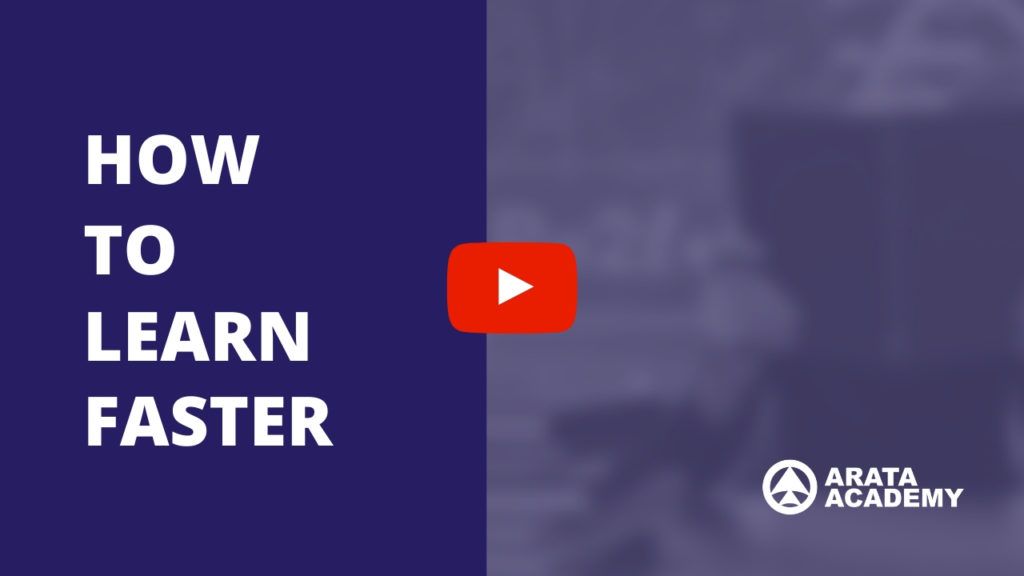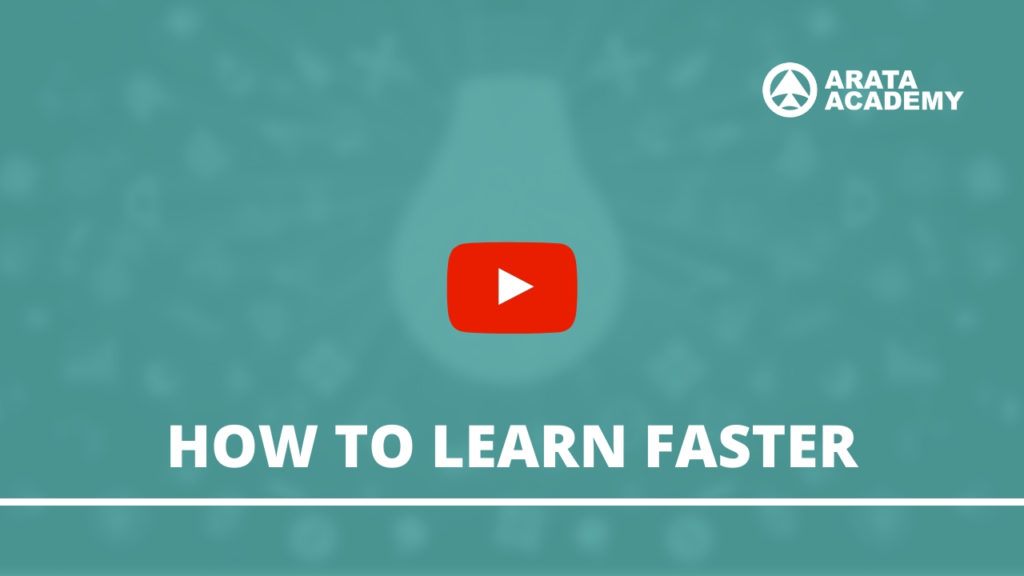Study Arata! Why do you often spend several hours studying for an exam … and in the end get a lower grade than someone else who studied less time, but did better? Everyone who has prepared for an exam knows well that studying is one thing, learning is another.
Spending hours watching classes or reading books is no guarantee that you will learn anything. To really learn, you need to practice active study. Active study.
There are many definitions for active study, but I like this one: Active study is when you study by moving your hands.
To really learn a subject, you need to take notes, highlight texts, create mind maps, solve exercises. You need to actively participate in the study, not just reading texts or taking classes passively.
But even among the forms of active study, there are some that are much more efficient than others. A study from the journal Psychological Science in the Public Interest evaluated various techniques and listed the top ten forms of study according to scientific criteria.
The techniques were classified as low, moderate or high effectiveness. Let’s get to know each one from the most basic to the most effective.
The techniques of low effectiveness are: highlight texts, reread texts, mnemonics, imagery use and summaries.
Moderate effectiveness techniques are elaborative interrogation, self-explanation, and interleaved practice.
And the techniques of high effectiveness are practice testing and distributed practice.
In today’s episode of the Study Arata series, you will understand each of the techniques. I’ll show you how to make sure you don’t make mistakes in using the techniques … and exactly what you should do to make the most of each technique.
1. Highlight texts
Highlighting parts of the text while you are reading is a very popular study technique. Almost everyone underlines texts with coloured pens while studying, and there is a reason for that. This is a very easy technique that requires very little of you.
For this reason, it is a study technique with low effectiveness.
When highlighting texts, your brain is not organizing, creating or connecting knowledge. So underlining can be of some use only when combined with other techniques or when you’re tired.
By the way, you will notice a rule in this list. The less effort the technique requires of you, the less efficient the technique will be for your learning.
2. Reread texts
Rereading a text you have read before is not very effective for you to learn content. Ideally, you should read it only once and create some summary or mind map, then just have to reread what you have already structured in your own words.
But there is one exception: massive rereading immediately after reading the text. Mass rereading is rereading right after reading, multiple times in a row. For example, let’s say you almost have to memorize an entire text to reach your goal. In this particular case, mass rereading of the same text is an effective technique for this very specific purpose.
3. Mnemonics
The word mnemonic means something related to memory, something that facilitates memorization.
Acronyms, funny sentences, rhymes and various other instruments can be used as mnemonics. If you know any interesting mnemonics, share them with us in the comments!
Although mnemonics are fun, they have little utility according to the scientific study I’m sharing with you here.
Mnemonics are only effective when keywords are important and when the material studied includes keywords that are easy to remember.
Subjects that do not fit well with keyword generation have not been well learned using mnemonics. So you should use more in specific cases and shortly before the test.
4. Imagery use
The researchers asked students to imagine pictures while reading texts. The positive result was only regarding the memorization of sentences. For longer texts, the visualization technique was not effective.
The transformation of mental images into drawings on paper also did not increase learning. When the image was drawn on paper, it made the students no longer have to imagine what the picture would look like. That is, drawing ends up limiting the imagination of students.
This does not invalidate the use of mindmaps for study, as maps are not just drawings but the connection of ideas and concepts.
Either way, the result of the study is that visualization is not an effective technique for exams that require knowledge from texts. And before any euphoric person complains that they often do visualization and drawing and have good results, we must always remember the opportunity cost. The time that is spent performing a low efficiency technique can be better harnessed with other techniques that bring even greater results.
5. Summaries
Summarizing the key points of a text with key ideas has always been an almost intuitive learning technique.
The study showed that summaries are useful for written exams, but not so much for objective exams.
Still, the technique of summarizing is still more useful than highlighting and rereading texts. Summarizing, writing, and compressing keyword annotations can be an effective strategy for students already experienced in synthesizing knowledge.
Very well. So far you have seen very popular and easy to do study techniques. Highlighting, rereading, mnemonics, visualizing, and summarizing are not the most efficient study techniques when we compare with the next study techniques we will learn now. The techniques we will now see have been classified as of moderate utility: elaborative interrogation, self-explanation, and interleaved practice.
6. Elaborative interrogation
The elaborative interrogation technique is one where you have to create explanations for the information you are studying.
For example, suppose you are studying nutrition and the text says that proteins are essential for building muscle mass. Instead of simply typing, summarizing, or memorizing this information, you need to ask yourself why?
Note that this type of study requires greater brain effort because you have to understand the causes of certain information by investigating its origins. This may be in the material you are studying, but it may also require you to do extra research on other materials.
7. Self Explanation
Self-explanation is a useful technique for learning more abstract content. In practice, you have to explain the content in your own words to yourself without consulting the background material.
This is a similar technique to the famous Feynman Technique, a method of study that tells you to teach the subject you are studying in such a simple way that even a child would understand.
In short, to apply the Feynman Technique you have to teach the subject to a child, real or imagined, identify flaws in his explanation, and then simplify it further.
Self-explanation is most effective if used during learning, not after study.
8. Interleaved Study
Is it more effective to study focusing on a single subject? Or is it better to merge different types of content more randomly? For example, should you study the full content of a subject and then move on to another study material? Or is it better to go alternating over and over?
The scientists concluded that interleaving is most useful in learning involving physical movement and cognitive tasks.
The main benefit of interleaving is not so much in learning, but in making the person spend more time studying, as alternating subjects give a feeling of rest or break monotony.
So if you feel like you are losing the desire to study because you got tired of the subject, try switching books and subjects. If you find that this renews your mood, then the technique will be helpful as it will increase the amount of study hours.
Congratulations on staying here. Remember: these techniques we just saw are considered of moderate utility. Elaborative interrogation, self-explanation and interleaved study.
Now let’s look at the two techniques that have been classified as high utility: the practice test and the distributed practice.
9. Practice test
Taking practice tests on what you are studying is one of the best ways to learn. Performing practice tests is up to twice as efficient as other study techniques.
No one learns to swim by reading a book about swimming. Practical testing means putting your knowledge to the test, either by applying something you have learned or by performing exercises.
If the subject you are studying has practical application, test. Whenever you study new content, test what you have learned in practice.
If it is a more theoretical subject, do exercises. Always after studying theory, solve exercises on that subject. These can be book exercises, previous exams, or even flash cards you create. What matters is putting into practice what you have studied.
When we are practicing, the brain needs to retrieve information, make associations, and test hypotheses. This kind of active study effort is what really drives long-term learning.
10. Distributed Practice
Distributed practice, also called spaced repetition, is a technique for distributing your study over time rather than concentrating all learning at one time. That is, it is the opposite of studying on the eve of the test.
The optimal distribution time for study sessions is ten to twenty percent of the period that content needs to be remembered. Therefore, if you want to remember something for a year, you should space your study on the same subject at least once a month. If you want to remember for a week, you should study once a day.
There are study apps that do these calculations automatically for you, even taking into account your hit and miss rates, bringing together the two most effective study techniques: practical testing and spaced repetition. The most famous of these is Anki.
Studying is one thing, learning is another. The more passive your study, the less likely you are to learn anything.
The next time you study, take a little bit of less efficient techniques like underlining, rereading and summarizing, and try more efficient methods like self-explanation, practice testing, and spaced repetition.

